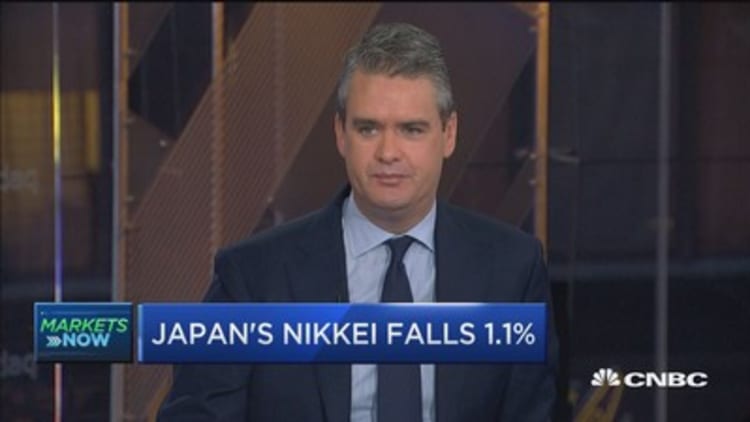
The tumult surrounding President Donald Trump's first weeks in office has not bothered professional investors, whose confidence is surging that both the economy and stock market are in for robust times ahead.
Optimism that the global economy is in a "boom" period has multiplied by orders of magnitude, according to one measure in the latest Bank of America Merrill Lynch Global Fund Manager Survey.
Some 23 percent believe the economy will see above-trend growth and inflation in the next 12 months, which BofAML interprets as "boom" sentiment. At this time last year, that number was just 1 percent. A net 59 percent believe global growth overall is heading higher.
The trend complements another reading in which 18 percent believe the economy is in a "Goldilocks" period, meaning growth is not so fast that it will spur aggressive policy action, but not so slow that it points to a looming recession. That indicator was at 6 percent a year ago.
Moreover, the number of pros who see "secular stagnation" — a prolonged period of fundamentally slow growth — is at just 43 percent, compared to 88 percent last year, the survey showed.
Hopes are high even though investors generally do not believe that the reforms to taxes and regulations that Trump has promised will be implemented anytime soon. Just 23 percent of respondents, for instance, expect tax cuts to happen before Congress takes its August recess, and 30 percent believe they won't get enacted until 2018.
The numbers come amid a general trend of improving economic data and surging confidence indicators, despite many on Wall Street citing policy uncertainty from the White House as the biggest risk ahead.
Another gauge of emotion, the Investors Intelligence Advisors Sentiment survey, shows bullishness on the stock market at 62.7 percent, the highest reading in more than 12 years. Bearish sentiment, or a belief that the market is heading lower, dropped to 16.2 percent, the lowest since August 2015.
In fact, the Investors Intelligence survey authors say the spread between bulls and bears is in a contrarian "danger zone" where the high level of optimism actually represents at least a near-term threat to stock prices.
However, the BofAML fund manager's gauge indicates that the market remains in "buy" territory.
Cash allocation levels at 4.9 percent of portfolios are lower than a month ago, but still elevated.
There are concerns, however.
Of the multiple market risks, 34 percent of the fund managers believe trade protectionism is the biggest. Trump has repeatedly criticized international trade agreements, and Wall Street is worried that an imposition of tariffs could spark a global trade war. Higher interest rates were cited by 28 percent, while 18 percent worried that a "financial event" could pose a disruption.
Managers most often cited gold as the best hedge against protectionism.
The investors also continue to believe the U.S. dollar is overvalued, with a net 28 percent indicating the U.S. greenback has risen too far. That's the highest proportion since September 2006.


